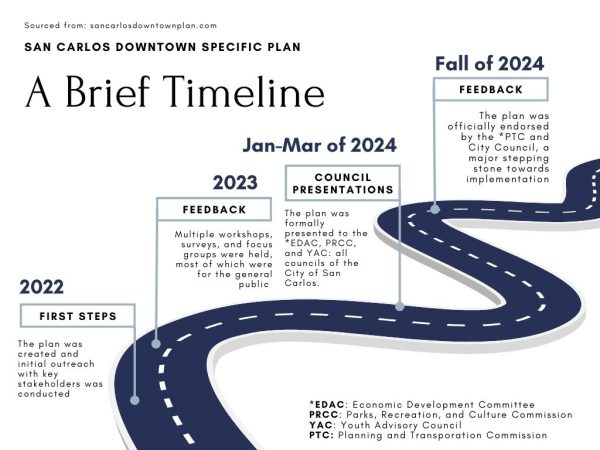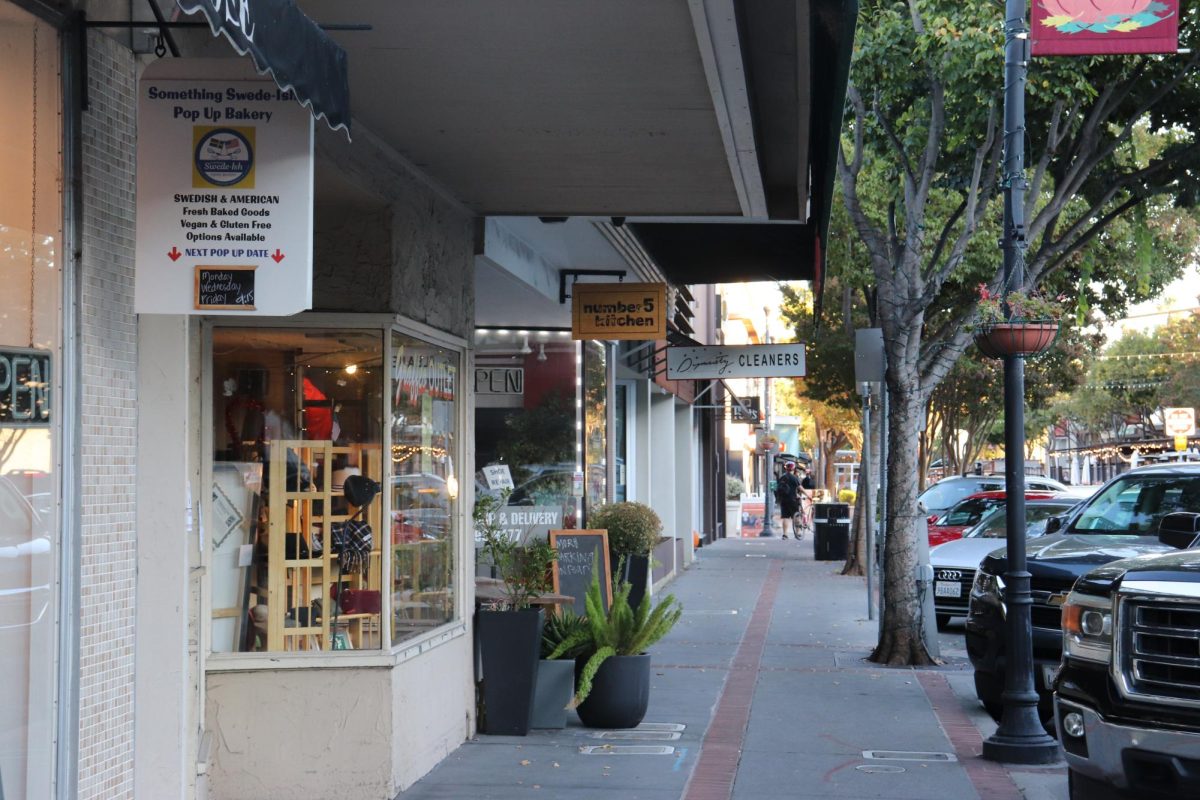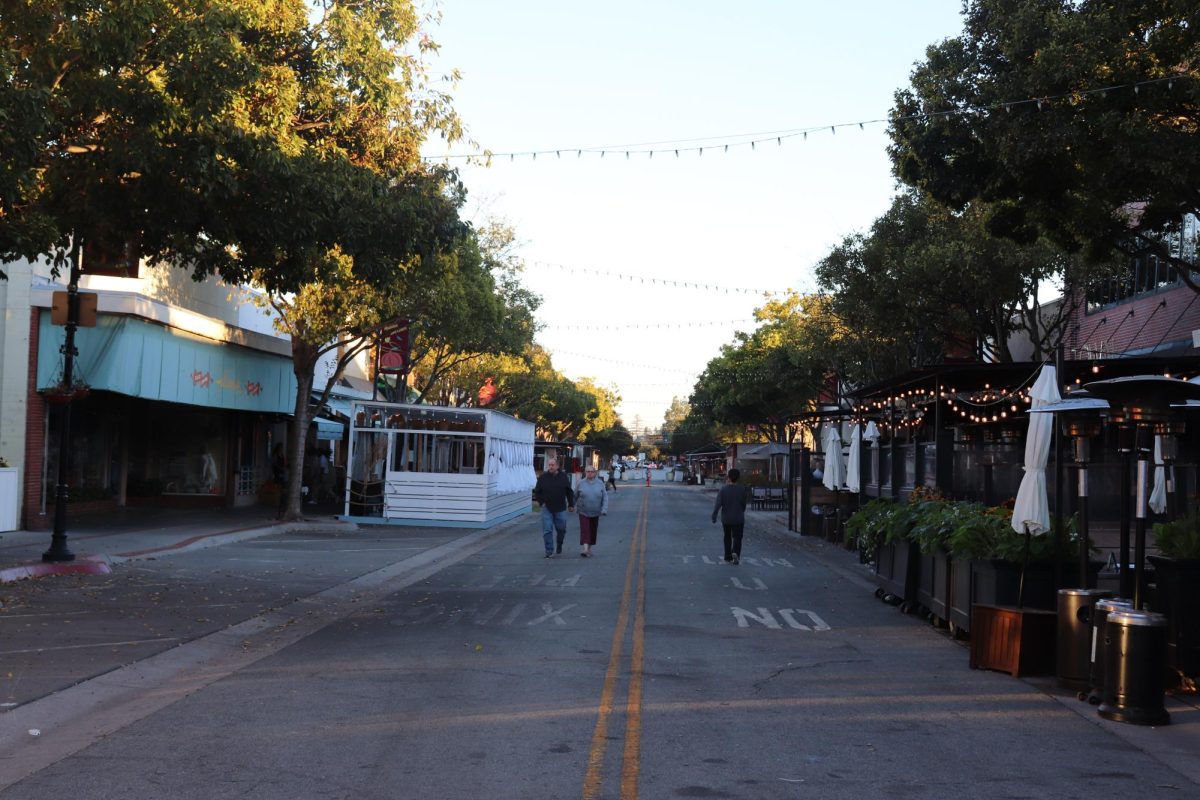The San Carlos City Council approved a motion to endorse the Downtown Specific Plan and the Streetscape Masterplan on Sept. 23.
The two plans have been in the works since 2022 and propose major renovations to downtown San Carlos, notably on Laurel Street and surrounding areas.
Through extensive planning over the past two years, members of the City of San Carlos and the Downtown Advisory Committee (DTAC), which was specially created for these plans, have incorporated community needs into this renovation.
Lisa Porras, the project lead for the Downtown Specific Plan, explains how the project started.
“In the pandemic, people were reluctant to spend time indoors, so a lot of outdoor dining started to take place in the streets and sidewalks. Our city council then said we need a plan that will meet the needs of businesses and residents now, post-pandemic, and further into the future,” Porras said.
San Carlos eateries have implemented the outdoor dining referenced by Porras in various methods. From a few tables and chairs to permanent, covered seating areas, restaurants have utilized their outdoor spaces.
The prime stretch of downtown on Laurel Street is divided into the 600, 700, and 800 blocks. The 600 block starts at Blue Line Pizza and goes until Peet’s Coffee, the 700 Block starts at Diddams and goes until West Park Bistro, and the 800 block starts at Bianchini’s Market and goes until Broiler Express.
Although restaurants on all three blocks have established outdoor seating, restaurants on the 700 block have been able to take advantage of the road being permanently closed.
One of the Downtown Specific Plan’s main goals is to make downtown San Carlos a more vibrant area with increased foot traffic. The team aims to make the streets more pedestrian and bicycle-friendly through the use of protected bicycle lanes, increased sidewalk widths, and a general shift towards having a more comfortable and enjoyable experience when walking downtown, according to Porras.
Among protected bike lanes and increasing sidewalk lengths from eight to 20 feet on sections of Laurel Street and San Carlos Avenue, other updates include improved outdoor dining spaces, increased urban greenery, public seating, electric vehicle charging stations, public restrooms, and enhanced connectivity between the Caltrain, eastern San Carlos, and downtown, according to the plan.
These initiatives were crafted with the community in mind as a shared vision was created that attempted to encompass all of San Carlos.
“The vision and guidance for the development of this plan is that it be inclusive for all users. We started to work with our community and our DTAC to find out what people really want to happen,” Porras said.
The voice of San Carlos youth is represented on the Downtown Advisory Council through the two members of the Youth Advisory Council (YAC), who sit on both councils.
“Whenever we meet, I always try to keep the youth and YAC perspectives in mind. For example, I wanted to implement youth pop-up stores where kids and teens could learn entrepreneurship. Affordable eating options are also a big need,” said Dylan Karmin, one of the YAC representatives on the Downtown Advisory Council.
Regarding dining options, Karmin noted that most in San Carlos are formal, sit-down restaurants, which are not ideal for kids and teens looking to grab a quick bite with their friends. He has pushed for a more kid-friendly experience while still maintaining the current downtown feel.
While community response was used as a foundation for developing the plan, there were also responses to the plan itself, notably in its parking and traffic congestion on and around Laurel Street. Around 47 parking spaces are supposed to be removed in the main areas, according to Brian Canepa, a consultant from W-Trans working on the Downtown Specific Plan.
“Even at seven o’clock on a Saturday evening, there are still a considerable number of spaces available with the space reduction, with 134 spaces available near the area and 236 spaces available in Wheeler Garage,” Canepa said in reference to a parking study they conducted on the current situation of downtown.
The parking space reduction will be the result of turning current diagonal parking spaces into parallel parking on the three main blocks of Laurel Street. Porras explained how multiple small businesses expressed concern regarding this reduction of storefront parking. Although parking across the area will be minimally impacted, many small businesses value quick storefront parking, allowing their customers easy access to their services.

Now that an official set of plans has been created and endorsed by the city council, Porras explained how they will continue workshopping the specifics but are hoping to start implementation in the next few years. The entire process is expected to be finished in one to two decades.
To start, the project may focus on renovating a small section of downtown, analyzing where the process could have been improved, and then continuing to implement the changes. Serving the community has been and will continue to be the foundation of this process, according to Porras.
“It has been really cool to see some of the ideas that I’ve thought of come into action. I mean, as a kid, you don’t really think that about a lot of this, and it often feels out of your reach for the most part, which is why I’ve enjoyed this process so much,” Karmin said.













